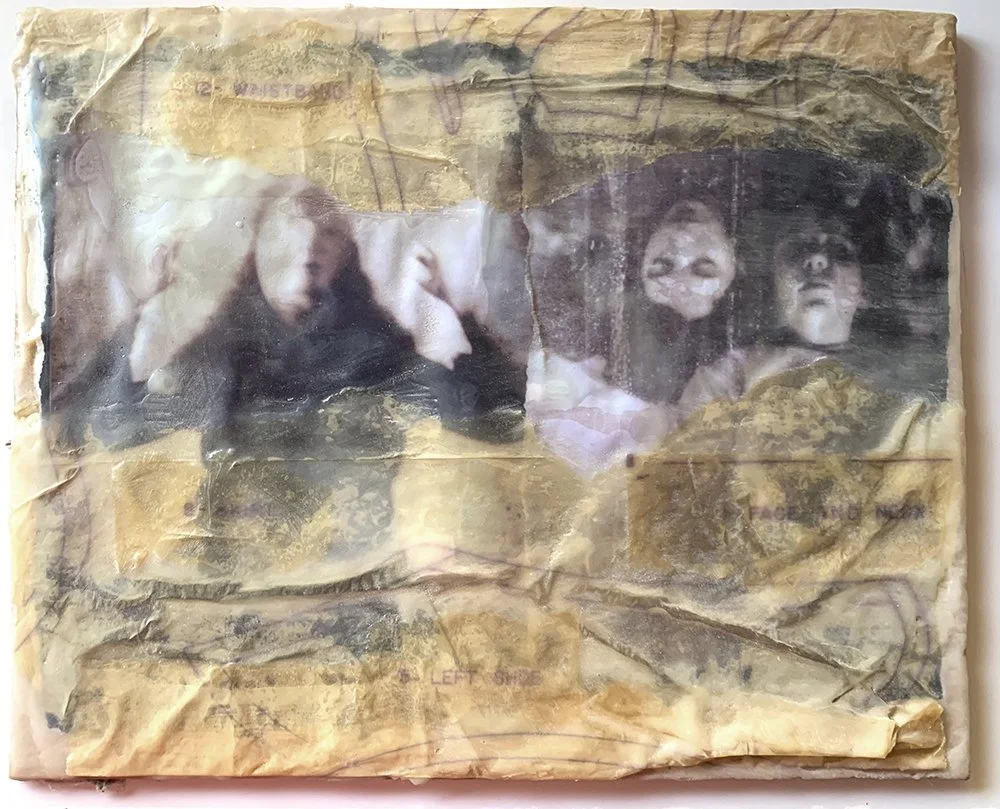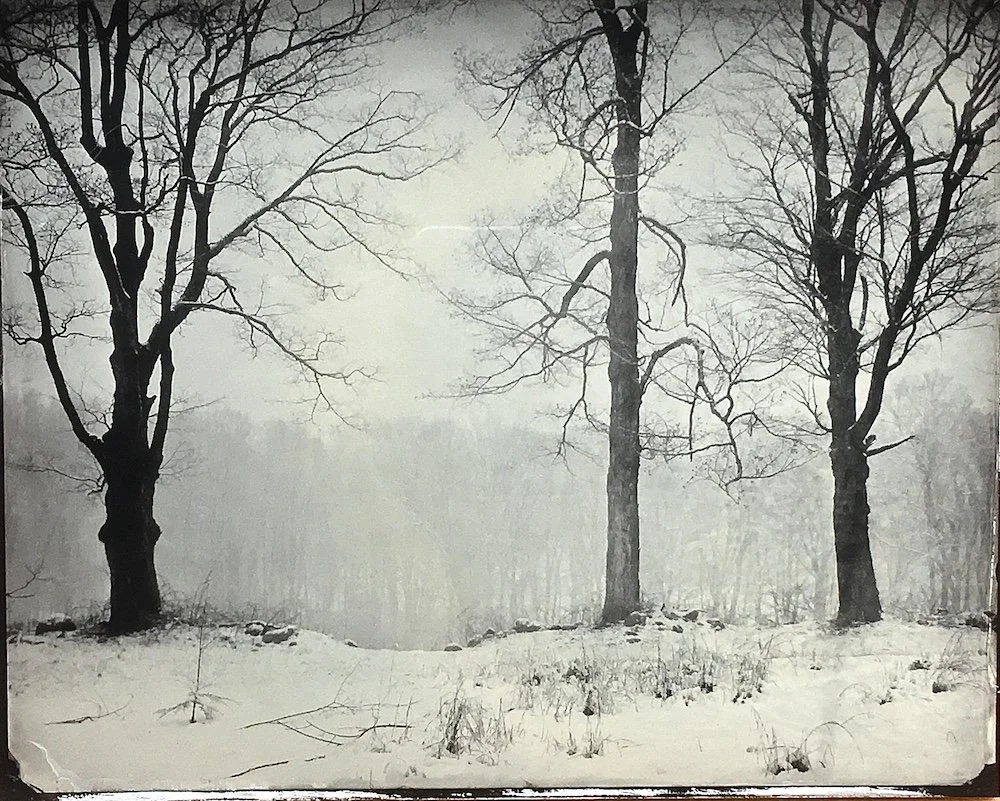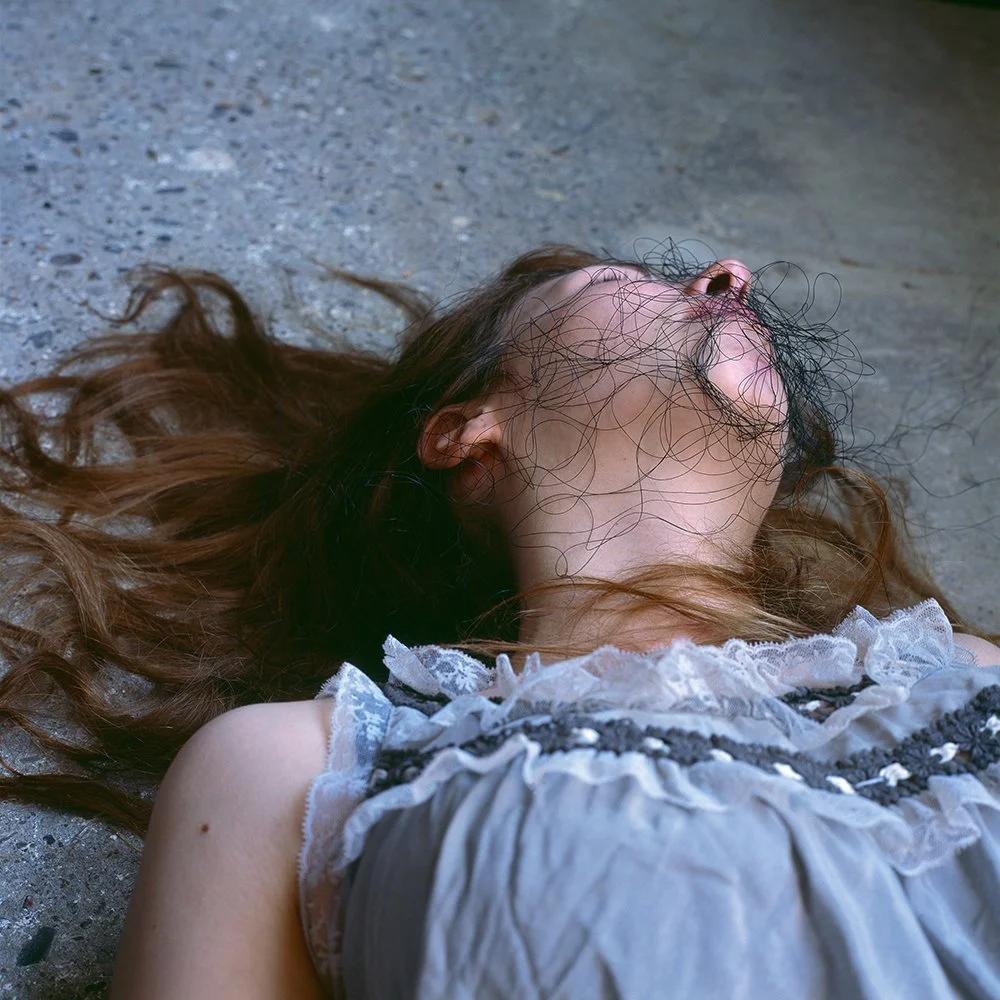This image floated through my Facebook timeline a few months ago, and I was immediately smitten. I love the mixed media, the tissue paper, and the messiness. The wax is balled up and crinkled in places. There are tears, ridges, small pieces of text. The image catches me and makes me wonder what is happening with the women.
Read MoreSo what is the story in this image, entitled Self-Portrait with Murphy (1990), besides being a hilarious photo? In my version in my head, I doubted we would ever know. And that is part of what makes it great for me: it left me with more questions than answers: Was it empathy for the cat? Absurdity? Strictly a photo set up? Was Gordon having a bad hair day? Is the attire part of the setup? Is (non-headdress) clothing his usual attire or an outfit chosen for the photo? Why is there money in the floral arrangement? Does he wear this "hat" often?
Read MoreWith this series, Jonas Yip has shown us something different than we usually find in this style of photographic imagery. No lens created any part of the image. These works come only from a combination of ambient light and his hands as he explores the materiality of the emulsion and the boundaries of photographic processes.
Read MoreWeston makes “fun” images. Candy colored, with engaging characters, they make me laugh. But they go beyond that. They also make me think.
Read MoreThe photos in this series begin as silver halide prints, but that is just a starting point for the final images Kauffmann creates.
Read MoreLeibrand is employed as a research scientist who works on developing an Artificial Intelligence (AI)-driven tool for health care quality measurement in Medicaid populations. This image reflects her concerns about how scientific data is sometimes used and manipulated.
Read MoreTraumatic events weave themselves into our identity and journey. Norah experiments with depicting visceral experiences of emotional states and memories. Childhood and intergenerational trauma live within my body and mind in a cyclical process of death, liminal space, and rebirth. Yet, my vivid reality is unseen by others. Moments of despair and hope, fear and peace, defeat and triumph, pass unmarked to the outside world.
Read Moreunendingly, an albatross was created using both gum and platinum-palladium processes. However, Angel often uses additional hand-applied paint when she wants a specific color to come forward, which was the case with this work. To do this, she paints into particular areas of the gum coloring to achieve her desired color in a specific spot. She also stated that using a base of platinum/palladium brings "a more polished look" to gum prints, which she said often can appear "raw."
Read MoreFor me, this image is romantic in a sad, desolate sort of way. The color is beautiful, and the scenery is far different than most of us encounter in our daily travels. And then there is that glorious, late afternoon late.
Read MoreDermott began this series of platinum-palladium portraiture work in 2018, after studying the work of Sally Mann. Her attraction to Mann was twofold; Dermott, like Mann, had also photographed her family. But even more importantly, Dermott was interested in the qualities and beauty Mann brings out in the photographic print itself.
Her portraits seemed to capture something, perhaps a moment of psychological conflict or existential youth angst. I don't find that discomfort of the sitter with the photographer, but rather via Dermott showing something about who her sitters are and how they relate in the world. The work is somber, direct, and confrontational, showing hints of Nicholas Nixon from his original image of the Brown sisters, made in 1975.
Read More"Beauty has become such an unfashionable word in art, so I hesitate to say this, but really there is no other answer: I'm looking for beauty, I want to participate in beauty, I want to share it with the world. It's not necessarily a romantic beauty that I'm looking for — it's about feeling an emotional connection with forces that are greater than us like nature or time, even destruction."
Read MoreIn a similar though more dire mindset than historian Coffin, Eder said, "The reef was forged in the crucible of climate change, and its existence is threatened by it now. The urgency of my documentation is heightened by the fact that at present rates of rising temperatures, and given the occurrence of increasingly violent storms, the reef could disappear beneath the ocean waves in a shockingly short time, leaving the mainland unprotected and hundreds of bird species without nesting areas."
Read MoreTo me, Kumi's works are a combination of sensual and tragic. The photographs are often disquieting due to her intentional use of this dichotomy. The thread winding through them is the inability of the viewer to see the faces of her models. There is attention to small detail while at the same time, she limits the specific information she wants us to see. She leaves it to her viewers to interpret the work through their cultural touchstones and imaginations.
Read MoreHello readers, I’m pleased to share our first poignant portfolio from work seen at the 2021 Click! Portfolio Reviews. I’ve been fortunate to review work for Click! over the past 4 years both in person and now online, which as you can guess is a hard task when looking at work that really resonates the best in tangible form. From my experience, Click! has drawn in some of my favorite styles of photography (and photographers for that matter). Meaning, I’ve seen a lot of great hand-crafted process work over the years and these lovely mixed media cyanotypes by Sally Chapman are no exception.
Let’s not talk about the process though, Chapman covers that below, but I will say this, I dig it. I’m a romantic, at the very least when it comes to art. Easily taken with pretty pictures. But it is more than just that, Chapman’s recontextualizing of monuments into new environments nods to the reclamation of the land by nature. An apocalypse even. And Chapman’s color use and frame spillover are beautifully designed.
Spend some time with these and take in the details, you won’t regret it. Thanks, Sally for sharing your work with us!
–Blue Mitchell @onetwelveprojects
Read MoreHer working process is something she calls 'mindless creativity.' She allows the pieces to evolve intuitively, not knowing what the result may become. Divine says that she pushes beyond what she knows and allows the magic to happen by working with the images and allowing them to speak. "Characters" (for lack of a better word) emerge, and some get replaced or left behind. Eventually, the story unfolds and becomes clear to her, all via a process of semi-controlled intuitive play. One symbol may dictate some of the others as the point of the work emerges from Divine's subconscious.
Read MoreMany tree-loving photographers manifest their adoration by making photographs of trees. I’m not someone who is quickly captivated by images of trees. I mean, sure, I like them. They are often pretty, and in their way, can be comforting as a substitute for actually being out in the world of nature. If climate makes communing with a tree challenging - due to weather or simply scarcity, as in a desert or a city of skyscrapers - then the image has even greater importance. Then there are images of trees that seek to cause us to take action urgently or we will leave our children and grandchildren an unliveable planet without trees or natural vegetation.
But Olson’s work doesn’t fit neatly into either of these boxes. She uses her photographs of trees to create 3-d, sculptural objects. They are not simply a clever manner of displaying the imagery; they are part and parcel of the conceptual underpinning of this work. Now, that hugely gets my attention!
Read More"I have spent the past year researching and uncovering suppressed images of Black women held in photographic collections at the Art Institute of Chicago. The images I have found and researched thus far depict the exploitation and violence towards Black women. I excavated, re-photographed, re-captioned, and re-contextualized the original works. By engaging with these images with the intervention of my hands and my body, I rescue and protect Black women's bodies and their humanity so that they can be seen and heard. With my ongoing body of work entitled Our Mothers' Gardens, I beg for more than the visibility of Black women in institutional collections and restorative justice. I also desire for the issue around institutions holding and silencing collections of visible and (in)visible violent visual depictions of Black women to be further highlighted." -Alayna Pernell
Read MoreAnyone who has seen Susan's work knows that she has concentrated on topics that typically affect someone later in life, all seen through a veil of sensitivity and love. In particular, her self-portraits deal with aging and acceptance as subject matter. Like many of us, the pandemic changed her lifestyle. In Rosenberg Jones' case, she turned the camera on herself as she and her husband were locked down in their high-rise NYC apartment. She told me, "Michelle Obama described a 'mild depression' which I understood completely. As the pandemic, toxic political and social climate, and general quality of life presented a troublesome reality, I continued to make these photographs into 2021. Anxiety about aging and isolation remains, albeit with some hope for the future mixed in."
For this image, she sat in her living room in her mother's antique chair, holding a prized painted teacup, and imagined herself having afternoon tea. She said, "When I viewed the image, I thought it to be a statement about memory, precious objects, body language, and aging."
Read MoreAsked about Spike Waves itself, Debe told me that although David is non-verbal, he still communicates via various mannerisms. “That particular day, David refused his medicine by turning away from Lori." (It seems that's quite a conundrum for Lori, because David requires the medication.) Debe also stated, "Six months after making the photo of David, I saw the fern. It reminded me of brain activity. But wasn't until I edited this image, accenting the shape of his headless body, that I saw the matching of organic shapes of the fern, his scoliotic curve and protruding ribs."
Read More



















